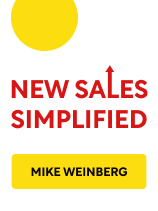

This article is an excerpt from the Shortform book guide to "New Sales Simplified" by Mike Weinberg. Shortform has the world's best summaries and analyses of books you should be reading.
Like this article? Sign up for a free trial here .
Do you often make sales presentations as part of your business? How do you make sure your presentation stands out from the sea of competitors’?
In high-profile business-to-business sales, customers often request a sales presentation that explains how the product/service works and how it will contribute to their company’s success. The key to making your proposition stand out from competitors is to design a presentation that is tailored to the specific needs of every client.
In this quick article, we’ll look at how to create a customer-focused presentation and how to deal with premature presentation requests.
How to Make a Sales Presentation
Many prospects expect sales reps to make formal slideshow presentations at the initial face-to-face meeting. This started with the introduction of PowerPoint in the 1990s when the ability to create slick slideshows changed the focus of many sales calls from dialogue to presentation. The seller became a performer taking the stage with the buyer as the audience.
However, to win new business, you need to first learn the customer’s needs so you can offer a tailored customer-focused solution rather than a generic presentation. Such a tailored presentation, given after the initial meeting, can be a powerful sales tool.
A Customer-Focused Format
The first step in creating a customer-focused presentation is resisting the urge to create a monologue and visuals focused on your company, processes, people, and solutions. Drop the photos or video of your buildings and campus—they don’t help you sell, and they copy rather than differentiate you from the competition.
Here’s how to structure your presentation:
- Title slide
- Agenda for the meeting
- Introductory statement: “Companies turn to (your company name) when they…” Then list three to five bullet points from the client issues section of your sales story.
- Client-focused statement: “Our understanding of your situation…” Then list issues and opportunities uncovered in the initial sales meeting and through research. (Demonstrate that you’ve listened and done your homework.)
- Dialogue: Stop and ask for input to switch the presentation from a monologue to a dialogue. For example, ask what resonated with the audience, and what was off-base. Ask a senior leader to prioritize the issues. Ask probing questions to explore the issues and their consequences further. Use what you learn to further tailor the presentation.
When the Prospect Requests a Presentation
Prospects are so accustomed to one-sided presentations that they often request a presentation as an initial meeting. But if you don’t have enough information to create slide 4 (bullet points describing the customer’s situation), you can’t make an effective presentation. So insist on a meeting before making a presentation.
You can do so in a polite but assertive way by explaining that your goal is to provide the optimum solution tailored to the customer’s unique needs. To do so, you need to follow a specific process that places a meeting before a presentation. Insisting on your process rather than defaulting to the buyer’s process differentiates you.
Nonetheless, there are times when the prospect won’t meet with you before a presentation. Some companies have rules for RFPs and about who in the company you can talk to. In this case, your best response is to show up for the presentation but adapt it to follow elements of your sales call structure: Introduce yourself, build rapport, and share your agenda. For example, you might follow a script like this: “Here’s the way we like to work. We take the first 10 minutes to hear why you invited us in and what issues you face. With that information, we can then focus on what’s most relevant and useful to you.”
Final Thoughts on Sales Success
- Mind your manners: It pays to be polite and considerate to receptionists, assistants, and other gatekeepers at a prospect’s company. Making a good impression on people in the company can only help your sales efforts. When you get an appointment and meet an assistant in person, take time to express appreciation to them for their help.
- Stay upbeat: A salesperson needs to be in top form every day. While others such as accountants can be miserable and still do their jobs, you can’t sell with a negative attitude. Don’t spend time with complainers or get pulled into negative conversations. Be on time for meetings and arrive with a smile.
- Look professional: Salespeople should look professional, successful, and confident (not cheap, worn out, or outdated). Dress one level above your customer. Don’t wear a company logo shirt to client meetings—it sends the message that you’re self-focused.
- Take time to unplug: To be effective, you need to take time to recharge. Unplug while on vacation and you’ll increase your performance when you return to work. If you work on vacation, you’re still using energy and creativity, not restoring it.

———End of Preview———
Like what you just read? Read the rest of the world's best book summary and analysis of Mike Weinberg's "New Sales Simplified" at Shortform .
Here's what you'll find in our full New Sales Simplified summary :
- A step-by-step plan for strategically selecting sales targets
- How to develop sales weapons
- How to consistently generate new sales






